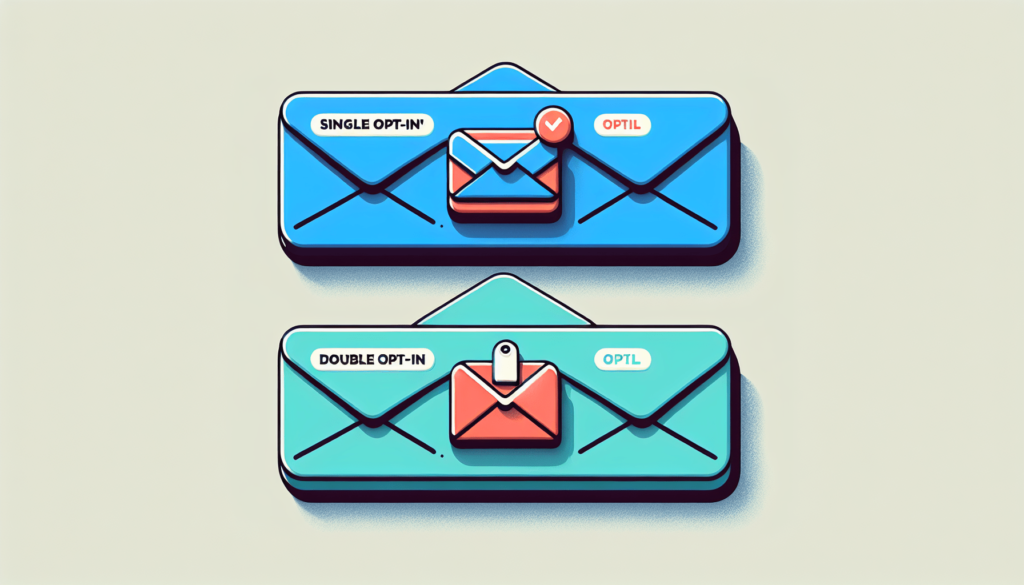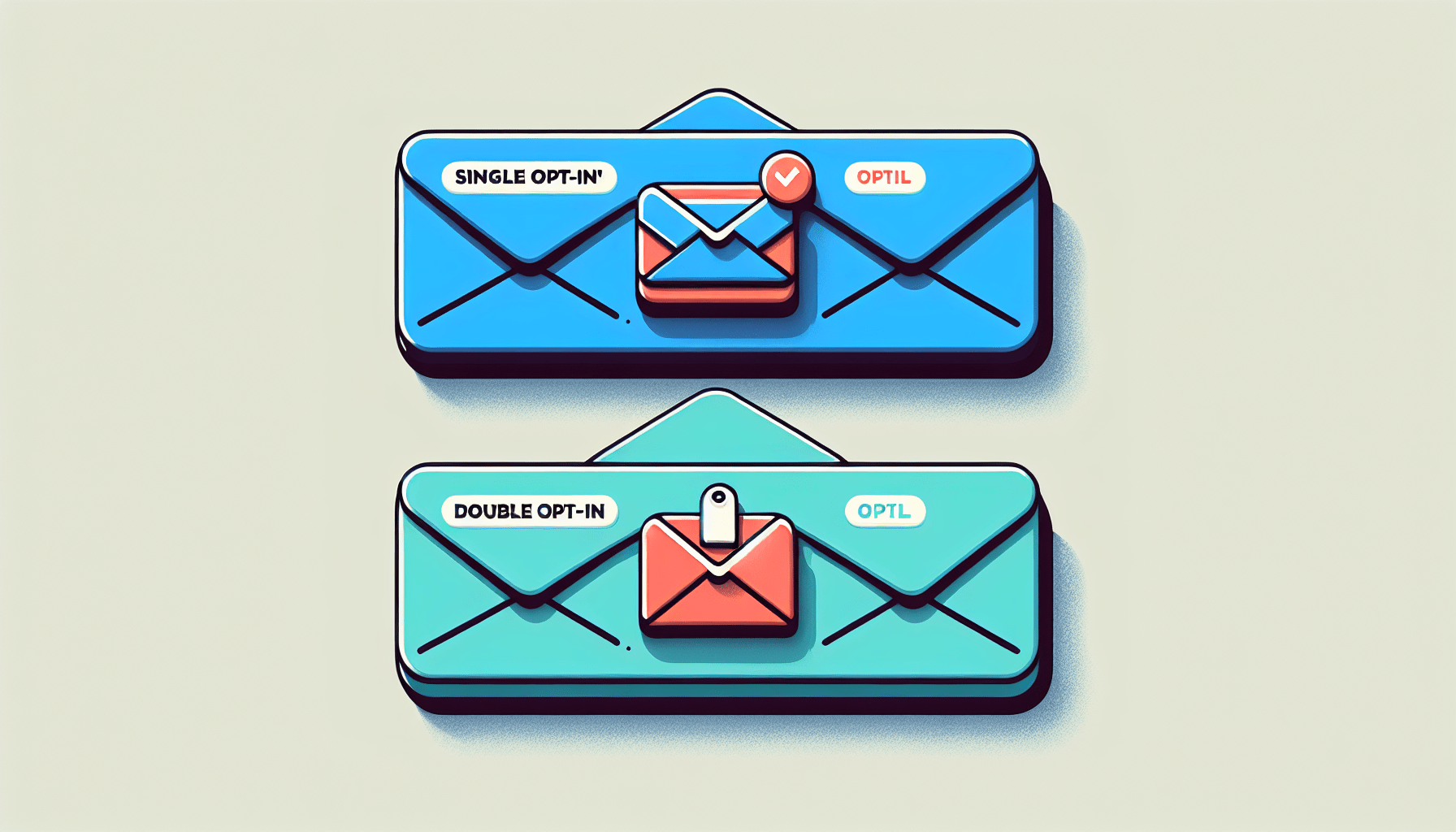What is the difference between single opt-in and double opt-in?

Understanding Single Opt-in and Double Opt-in
When it comes to email marketing practices, single opt-in and double opt-in are two common terms that come up frequently. Each method has its own set of pros and cons, and it’s important to understand the differences between the two in order to make an informed decision for your email marketing strategy.
Single Opt-in
Single opt-in is a process where a user provides their email address and is immediately added to your email list without any additional confirmation. This means that once a user fills out a subscription form on your website or landing page, they will start receiving emails from you right away.
Single opt-in is popular among marketers because it simplifies the subscription process for users. It eliminates the need for users to take an extra step to confirm their subscription, which can potentially lead to higher subscription rates.
However, one of the drawbacks of single opt-in is that it can result in a higher number of invalid or fake email addresses being added to your list. Since there is no verification process in place, users can easily input incorrect email addresses or even ones that don’t belong to them.
Double Opt-in
On the other hand, double opt-in is a two-step process where a user first fills out a subscription form and then receives an email with a confirmation link that they must click in order to be added to your email list. This additional step ensures that the email address provided is valid and that the user actually wants to receive emails from you.
Double opt-in is seen as a more secure method of adding subscribers to your list. By requiring users to confirm their subscription, you can be sure that the email addresses on your list are legitimate and that your emails are being sent to engaged users who are genuinely interested in your content.
While double opt-in may result in a lower number of subscribers compared to single opt-in due to the additional step involved, it often leads to higher open and click-through rates. This is because subscribers who have confirmed their subscription are more likely to be actively interested in your emails and engage with your content.
Pros and Cons of Single Opt-in and Double Opt-in
To help you make a more informed decision, let’s take a closer look at the pros and cons of single opt-in and double opt-in.
Pros of Single Opt-in
- Simplifies the subscription process for users
- Can lead to higher subscription rates
- Immediate engagement with subscribers
Cons of Single Opt-in
- Higher risk of fake or incorrect email addresses being added to your list
- Lower engagement rates due to lack of verification process
Pros of Double Opt-in
- More secure method of adding subscribers to your list
- Ensures that email addresses are valid and subscribers are engaged
- Higher open and click-through rates
Cons of Double Opt-in
- Lower number of subscribers compared to single opt-in
- Additional step may deter some users from subscribing

Which Opt-in Method Should You Choose?
Now that you have a better understanding of the differences between single opt-in and double opt-in, the question remains: which opt-in method should you choose for your email marketing strategy?
The answer ultimately depends on your goals and priorities. If you prioritize simplicity and want to focus on growing your email list quickly, single opt-in may be the better choice for you. However, if you value the quality of your subscribers and want to ensure that your emails are being sent to engaged users, double opt-in is the way to go.

Best Practices for Single Opt-in
If you decide to go with single opt-in for your email marketing strategy, here are some best practices to keep in mind:
-
Implement email validation: Use tools or services that can help you verify the validity of email addresses in real-time to reduce the number of fake or incorrect addresses on your list.
-
Regularly clean your email list: Monitor your list regularly and remove any invalid or inactive email addresses to maintain list quality and deliverability.
-
Set clear expectations: Clearly communicate with your subscribers about what kind of content they can expect to receive from you to manage their expectations and reduce the likelihood of unsubscribes.

Best Practices for Double Opt-in
On the other hand, if you opt for a double opt-in approach, here are some best practices you should follow:
-
Customize confirmation emails: Personalize your confirmation emails to make them more engaging and encourage users to complete the subscription process.
-
Provide clear instructions: Make sure your confirmation email includes clear instructions on how users can confirm their subscription, such as a prominent call-to-action button.
-
Follow up with reminders: Send reminder emails to users who haven’t confirmed their subscription within a certain timeframe to encourage them to complete the process.

Conclusion
In conclusion, the main difference between single opt-in and double opt-in lies in the verification process of subscriber email addresses. While single opt-in simplifies the subscription process and can lead to higher subscription rates, double opt-in ensures that your email list is made up of engaged and valid subscribers.
Ultimately, the opt-in method you choose should align with your goals and priorities for your email marketing strategy. Whether you prioritize growing your list quickly or focusing on quality engagement, understanding the pros and cons of each method will help you make an informed decision that benefits your overall email marketing efforts.

Comments are closed